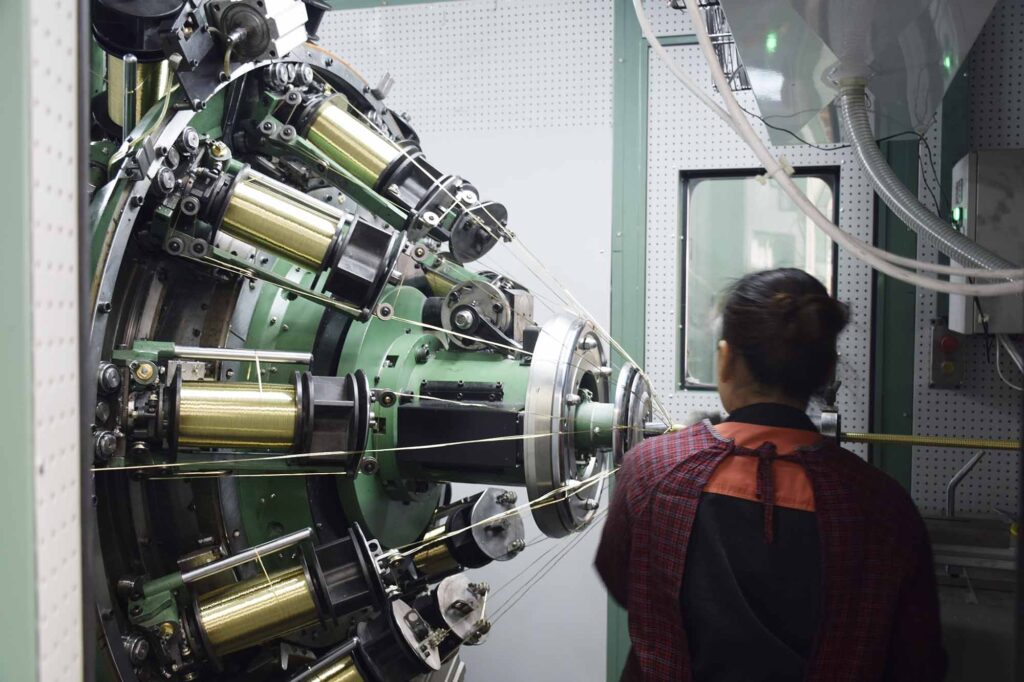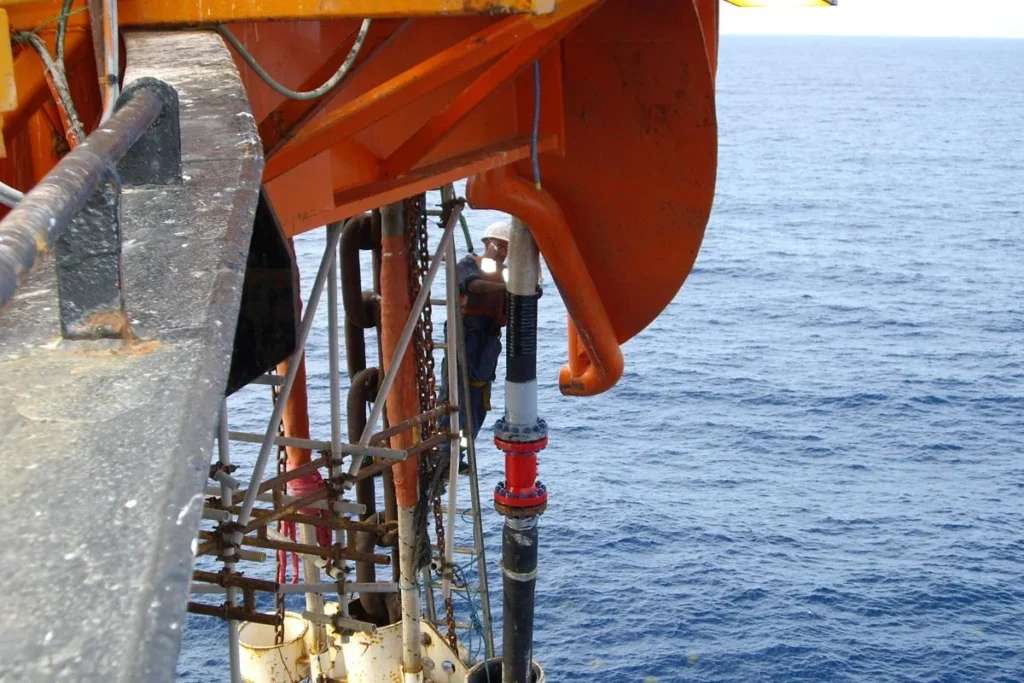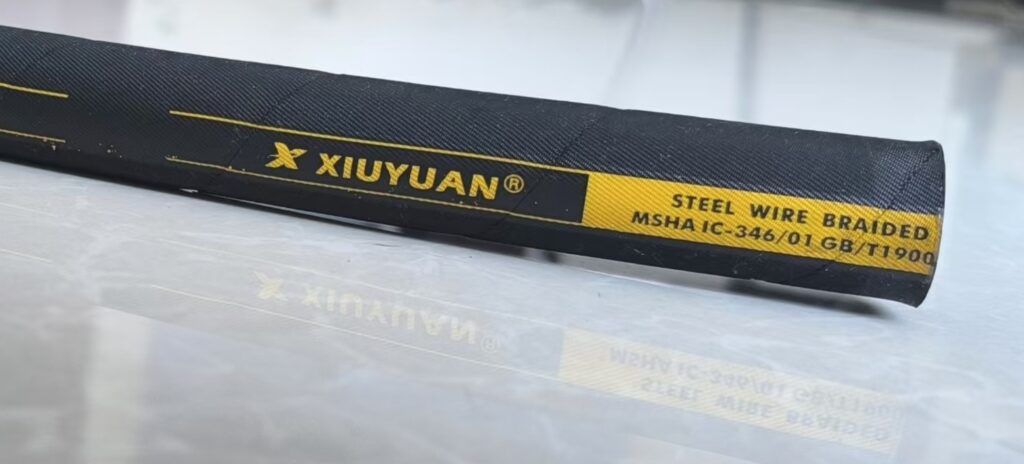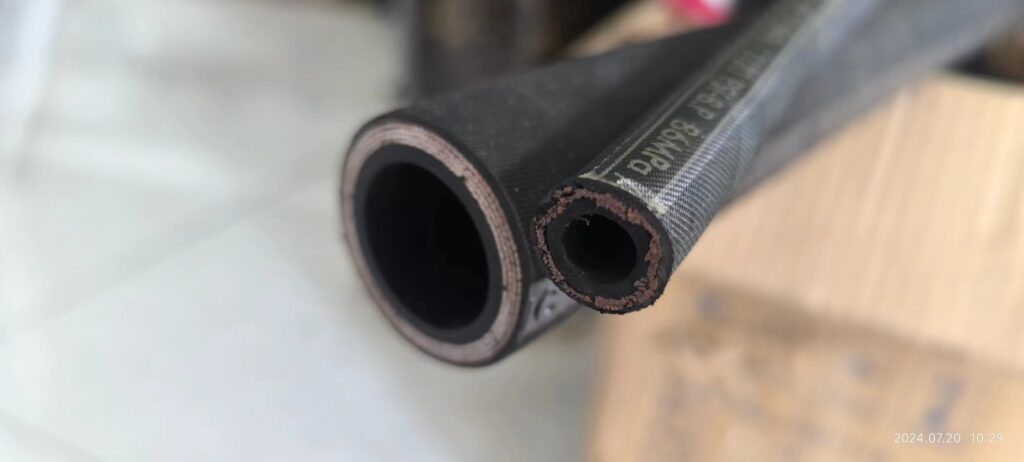Introduction
In a world where environmental consciousness is becoming increasingly vital, carbon-free hoses have emerged as a groundbreaking innovation with profound significance. These hoses represent a critical shift in our approach to sustainability, offering a viable alternative to traditional hoses that have long been associated with environmental harm.
Carbon-free hoses are engineered with a fundamental objective: to significantly reduce or eliminate the carbon emissions and environmental consequences typically associated with conventional hose materials and manufacturing processes. These hoses are designed to be eco-friendly, energy-efficient, and to minimize the ecological footprint of various industries and applications where hoses are indispensable.
Their significance extends beyond mere technological innovation. Carbon-free hoses serve as a powerful symbol of our collective commitment to reducing the carbon footprint and addressing the global challenges posed by climate change. As we delve into the details, you’ll discover the technology behind these hoses, their applications, benefits, and the broader environmental impact of transitioning to this sustainable solution.
What Are Carbon-Free Hoses?
Defining Carbon-Free Hoses and Their Significance:
Carbon-free hoses, at their core, are a revolutionary departure from traditional hose technology. They are designed with the primary goal of minimizing or entirely eliminating the environmental impact typically associated with conventional hose materials and manufacturing processes. These hoses are crafted using sustainable and eco-friendly materials and technologies, and their significance lies in their role as a sustainable, low-impact solution for a wide range of applications.
Carbon-free hoses are instrumental in addressing two critical environmental concerns: carbon emissions and resource conservation. They significantly reduce or completely eliminate carbon emissions generated during production, use, and disposal, making them a powerful tool in mitigating climate change and reducing the carbon footprint. Moreover, they often employ renewable or recycled materials, minimizing the strain on non-renewable resources. Their significance is evident in their contribution to environmental sustainability and the preservation of natural resources.
Materials and Technologies in Carbon-Free Hose Manufacturing:
Carbon-free hoses are typically crafted using advanced materials and sustainable manufacturing technologies. These materials can include recycled plastics, biodegradable alternatives, or other environmentally friendly polymers. Additionally, sustainable manufacturing practices, such as reduced energy consumption and minimal waste generation, are integral to their production. These hoses often adhere to rigorous environmental and quality standards, ensuring their eco-friendly credentials.
Differences Between Traditional Hoses and Carbon-Free Alternatives:
The key distinction between traditional hoses and carbon-free alternatives lies in their environmental impact. Traditional hoses are typically manufactured from non-renewable materials like PVC, rubber, or other plastics, and their production often involves energy-intensive processes, leading to a significant carbon footprint. Conversely, carbon-free hoses use materials that are more sustainable and can be recycled or biodegraded. Their production methods are designed to minimize waste and reduce energy consumption, resulting in a substantially lower environmental impact. The adoption of carbon-free hoses represents a proactive shift towards more environmentally responsible choices and contributes to the larger effort of reducing our carbon emissions and conserving resources for a greener, more sustainable future.
The Environmental Impact of Traditional Hoses
Conventional Hoses and Their Environmental Impact:
Conventional hoses, often made from materials like PVC (polyvinyl chloride) or rubber, have a significant environmental footprint due to several factors, contributing to carbon emissions and environmental damage:
Manufacturing Processes: The production of traditional hoses involves energy-intensive processes, including the extraction and refinement of raw materials, as well as the energy needed for molding and curing. These processes release carbon emissions into the atmosphere, primarily from the burning of fossil fuels and the release of greenhouse gases.
Transportation: Traditional hoses are typically mass-produced in various manufacturing facilities and transported over long distances, often across borders. The transportation of these heavy, bulky items adds to their carbon footprint, as it requires the consumption of fossil fuels and results in additional emissions.
Disposal: At the end of their lifespan, conventional hoses are frequently discarded in landfills, where they can take hundreds of years to break down. During this decomposition process, PVC hoses may release toxic chemicals and contribute to soil and water pollution. Even if hoses are incinerated, they release harmful substances into the air.
Examples of Environmental Consequences:
Greenhouse Gas Emissions: The carbon emissions from manufacturing and transportation of traditional hoses significantly contribute to global greenhouse gas emissions, exacerbating climate change.
Resource Depletion: The extraction and use of non-renewable resources, such as petroleum-based plastics, deplete natural resources and contribute to environmental degradation.
Microplastic Pollution: When traditional hoses degrade, they can release microplastics into the environment, which can be ingested by wildlife and enter the food chain, posing health risks.
Landfill Waste: The slow degradation of traditional hoses in landfills leads to wasted space and contamination of soil and groundwater, further exacerbating environmental damage.
Advantages of Carbon-Free Hoses
Carbon-free hoses offer a range of compelling environmental benefits that make them a critical component in the global effort to reduce carbon emissions and promote sustainability. Their advantages extend to reduced carbon footprint, energy efficiency, and resource conservation, all of which are instrumental in ushering in a greener and more sustainable future.
Reduced Carbon Footprint:
One of the most significant advantages of carbon-free hoses is their ability to minimize carbon emissions throughout their lifecycle. This reduction stems from several factors:
Sustainable Materials: Carbon-free hoses often use materials like recycled plastics or biodegradable alternatives, which have a lower carbon impact than traditional hose materials.
Eco-Friendly Manufacturing: Their production involves energy-efficient and low-waste manufacturing processes, resulting in reduced emissions during fabrication.
Transportation Efficiency: Carbon-free hoses are often designed to be lightweight and compact, decreasing the emissions associated with transportation.
These combined efforts result in a significantly smaller carbon footprint compared to traditional hoses.
Energy Efficiency:
Carbon-free hoses are designed to be energy-efficient in multiple ways:
Manufacturing: Sustainable manufacturing practices, such as using clean energy sources, result in reduced energy consumption during production.
Operation: In applications, these hoses are engineered to minimize energy losses, ensuring that the energy used for fluid transfer is optimized.
Resource Conservation:
Carbon-free hoses play a role in conserving vital resources:
Reduced Resource Dependency: By using materials like recycled plastics and sustainable alternatives, they reduce the demand for non-renewable resources.
Minimized Waste: Their manufacturing processes generate less waste, contributing to resource conservation and reduced environmental impact.
Contributing to a Greener and More Sustainable Future:
Carbon-free hoses represent a crucial step towards a greener and more sustainable future. As the global community strives to address climate change and reduce the ecological footprint, the adoption of eco-friendly hoses is a tangible and impactful measure. These hoses not only reduce greenhouse gas emissions but also inspire innovation and sustainability in manufacturing industries, setting a precedent for responsible product development.
Furthermore, the increased use of carbon-free hoses promotes awareness among consumers, encouraging them to make environmentally conscious choices. By reducing the environmental consequences of hoses, we move closer to creating a circular and sustainable economy, where products are designed with the environment in mind, from production to disposal. Carbon-free hoses exemplify a commitment to mitigating climate change and preserving the planet’s resources for future generations, making them a vital and promising component of a greener and more sustainable future.
Innovative Technologies in Carbon-Free Hoses
Cutting-Edge Technologies in Carbon-Free Hoses:
The development of carbon-free hoses relies on cutting-edge technologies that prioritize sustainability and environmental responsibility. Some of these key technologies include:
Advanced Materials: Carbon-free hoses often incorporate advanced materials like recycled plastics, bio-based polymers, and natural fibers. These materials offer durability, flexibility, and resistance to environmental stressors while significantly reducing the carbon footprint associated with hose production.
Biodegradable Compounds: Biodegradable alternatives are gaining traction in hose manufacturing. These compounds break down naturally over time, reducing the environmental impact when hoses reach the end of their lifespan.
Sustainable Manufacturing Processes: Sustainable manufacturing practices, such as 3D printing and energy-efficient molding techniques, play a pivotal role in reducing energy consumption, waste generation, and emissions during production.
Examples of Leading Companies in the Industry:
Several companies are at the forefront of developing carbon-free hoses, showcasing their commitment to environmentally responsible solutions. Some notable examples include:
Trelleborg Group: Trelleborg, a global engineering group, is known for its eco-friendly hose solutions. They focus on utilizing sustainable materials and optimizing the manufacturing process to minimize their environmental footprint.
Eaton Corporation: Eaton, a multinational power management company, offers a range of hoses designed for sustainability. They invest in research and innovation to create hoses that meet stringent environmental standards and regulations.
ContiTech (Continental): As part of the Continental Corporation, ContiTech specializes in developing carbon-free hoses using eco-friendly materials like recycled PET (polyethylene terephthalate). They prioritize resource conservation and energy efficiency in their manufacturing processes.
Gates Corporation: Gates is another leading manufacturer that offers environmentally responsible hoses. Their products often incorporate recycled materials and adhere to stringent sustainability and quality standards.
These companies serve as exemplars in the industry, showcasing the potential of carbon-free hoses to reduce the environmental impact of fluid transport applications across various sectors. Their dedication to innovative technologies and sustainable practices contributes to the broader shift towards a more environmentally responsible and sustainable future.
Applications of Carbon-Free Hoses
Carbon-free hoses are making significant inroads in various sectors, proving to be instrumental in reducing the environmental impact in a multitude of applications. Here are some sectors where these hoses are creating a positive change:
Gardening: In gardening, carbon-free hoses are replacing traditional PVC hoses. These eco-friendly alternatives reduce the use of non-renewable resources, decrease greenhouse gas emissions during production, and minimize the release of harmful chemicals when exposed to sunlight. Gardeners benefit from hoses that are not only durable but also aligned with sustainable practices.
Agriculture: Carbon-free hoses are crucial in modern agriculture, where water management is vital. These hoses help conserve water resources by minimizing water wastage due to leakage and evaporation. Additionally, their use of sustainable materials aligns with the agricultural sector’s increasing focus on eco-friendly farming practices.
Industry: Industries rely on hoses for a wide range of applications, from manufacturing processes to material transport. Carbon-free hoses play a role in reducing energy consumption and emissions during these operations, leading to cost savings and a smaller carbon footprint.
Automotive: In the automotive sector, carbon-free hoses contribute to fuel efficiency and reduced emissions. By minimizing the weight of hoses, vehicles become more fuel-efficient, leading to lower carbon emissions and greater sustainability.
In these sectors, the use of carbon-free hoses not only reduces the environmental impact but also aligns with sustainability goals. Whether it’s conserving water in agriculture, reducing energy consumption in industry, or promoting fuel efficiency in automotive applications, these hoses are a practical and eco-friendly solution to address environmental concerns across a broad spectrum of industries.
Challenges and Limitations
Challenges and Limitations of Carbon-Free Hoses:
While carbon-free hoses offer numerous environmental benefits, they do face certain challenges and limitations, which are crucial to acknowledge:
Cost: Carbon-free hoses can be more expensive to manufacture due to the use of sustainable materials and eco-friendly production methods. This cost difference can be a barrier to adoption for some consumers and industries, especially those with tight budgets.
Durability: Some carbon-free materials, while eco-friendly, may not be as durable as traditional hose materials like PVC. This can lead to a shorter lifespan and the need for more frequent replacement, potentially offsetting the environmental benefits.
Industry Adoption: Widespread adoption of carbon-free hoses in various industries can be slow due to existing infrastructures and practices. Industries may be resistant to change, particularly when it involves updating equipment or processes.
Research and Development Efforts:
Recognizing these challenges, ongoing research and development efforts are focused on addressing these limitations:
Cost-Efficiency: Researchers are working on improving the cost-effectiveness of carbon-free hoses. This involves finding innovative ways to reduce production costs, making these hoses more accessible to a wider range of consumers and industries.
Enhanced Durability: Efforts are being made to develop more durable materials that maintain their eco-friendly properties. This includes creating innovative composites and improving the longevity of biodegradable alternatives.
Industry Engagement: Companies and organizations are actively engaging with industries to promote the adoption of carbon-free hoses. This includes educating businesses on the long-term cost savings and environmental benefits, driving industry-wide changes.
As technology and understanding of sustainable materials advance, carbon-free hoses are expected to overcome many of these challenges, making them a more viable and environmentally responsible choice across a broader range of applications.
Conclusion
In this article, we’ve explored the world of carbon-free hoses and their environmental significance. These hoses are eco-friendly alternatives to conventional options, designed to reduce carbon emissions, promote resource conservation, and advance sustainability. The key takeaways include:
Carbon-Free Hoses: These hoses are engineered with sustainable materials and manufacturing processes to minimize their environmental impact.
Reducing Carbon Footprint: Carbon-free hoses significantly reduce carbon emissions across their lifecycle, contributing to global efforts to combat climate change.
Energy Efficiency: These hoses are energy-efficient, from production to application, conserving resources and reducing greenhouse gas emissions.
Resource Conservation: The use of recycled materials and sustainable manufacturing practices minimizes resource consumption and waste generation.
Applications Across Sectors: Carbon-free hoses find applications in gardening, agriculture, industry, and automotive sectors, making a positive impact on environmental sustainability.
Encouraging Sustainable Choices:
The significance of carbon-free hoses is clear: they are a tangible way to reduce our carbon footprint and protect the environment. By considering the environmental impact of our choices and supporting companies that prioritize sustainability, we can all contribute to a greener, more sustainable future. The adoption of carbon-free hoses is a practical step toward a more eco-conscious and responsible lifestyle.





